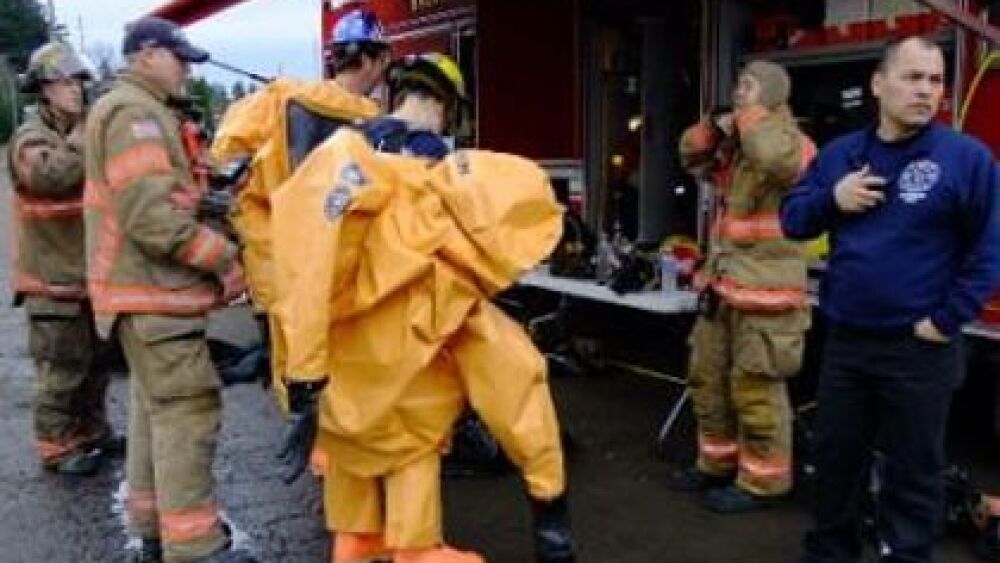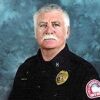By necessity and, like the early days of emergency medicine, a hazardous materials (hazmat) response has become another critical incident category for the fire service. Like other fire department disciplines, a hazmat crisis requires a measured, deliberate and intensive approach.
Unlike other fire department calls, however, a hazmat incident is a low-probability, high-threat, mammoth-resource, huge-consequence and multijurisdictional situation. Successful resolution of a hazmat incident involves the right equipment – and the education and training to use it effectively.
Historically and because of the amount and cost of equipment needed for any hazmat operation, small- and medium-sized fire departments throughout the country rely on a cooperative response. Failure of small towns and villages as well as most cities to solidify a comprehensive action plan for such a massive response leaves them open to disaster during a major hazmat event.
Successful resolution of a hazmat incident requires mutual-aid or automatic-aid agreements with various agencies, organizations and companies. Contracts for identification, rescue and evacuation, isolation and containment, mitigation, as well as decontamination and disposal are critical to a safe resolution of any hazmat breach. These specific disciplines and areas of specialization must be assembled regardless of geography or jurisdiction.
Most hazmat incidents will result in a call to state agencies. For small and local departments faced with an insurmountable emergency, bigger is better when it comes to resource availability. Federal intervention will come from the state.
1. Hazmat basics: Signs and symptoms
For a firefighter, understanding the world of hazardous materials is as straightforward as learning the signs and symptoms used by EMTs and paramedics. As complex as hazmat substances are – especially in combination – the nature and chemistry of any material can be understood.
A hazardous material is any substance that poses an unreasonable risk to life, property and the environment. It is only hazardous when it is out of its container. A hazardous material can be identified by its location, its use, and the labels, placards and signs attached to it.
The safe packaging, transportation and storage of hazardous materials is so important that the U.S. government, in cooperation with the United Nations, utilizes agencies such as the EPA, the Department of Transportation, the Federal Highway and Railroad Administrations as well as the Coast Guard to maintain definitions, controls and response standards when dealing with such substances.
2. Exploring hazmat statistics
During the past 90 years, there have been more than 25,000 hazmat incidents analyzed and documented, including boiling liquid expansion vapor explosions (BLEVES), major spills, large explosions and derailments. A hazmat incident in this category is a high-risk/low-probability emergency.
With over 85,000 chemicals listed under the EPA’s Toxic Substances Control Act, there are over a million hazmat shipments daily; with Texas, Louisiana and California moving the most common products, flammable and combustible liquids. These are medium risk/medium probability situations with ignition being the great variable to level of hazard.
There are over 2.5 million tons of hazardous materials shipped every year by highway, rail, water, air, pipeline and parcel. It is estimated that 75% of all hazardous waste shipments moving across the United States violate existing regulations. A hazmat incident will occur in your jurisdiction regardless of probability.
3. Defining hazardous materials
As defined by the United Nations, there are nine separate classes of hazardous materials, which can be divided into five basic categories:
- Corrosives are substances or vapors that can change other materials.
- Reactives are substances that react with air, water and other materials to produce toxic fumes or an explosion.
- Caustics or Irritants cause deterioration or burning to eyes, skin, membranes and other tissues, inside and outside the body.
- Flammables and Explosives can ignite in a wide range of temperature conditions and from any source such as spark, cigarette or pilot light.
- Toxics and Poisons are substances that cause injury or death when taken onto or into the body.
United Nations Hazardous Material Classes include:
Class 1 – Explosives
Class 2 – Gases
Class 3 – Flammable Liquids
Class 4 – Flammable Solids
Class 5 – Oxidizing Substances and Organic Peroxides
Class 6 – Toxic Substances and Infectious Substances
Class 7 – Radioactive Materials
Class 8 – Corrosive Substances
Class 9 – Miscellaneous Hazardous Materials
4. Mid-size response to a hazmat incident
- The fire service will be tasked with identification, rescue and emergency decontamination.
- Dispatch is responsible for a chemical library, contacting Poison Control and accessing a computer program such as Cameo or WISER.
- Law enforcement will manage initial area isolation, extended evacuation and egress control.
- Medical facilities will have a jump on secondary decontamination facilities, patient care and antidotal treatments.
- Private companies and local organizations may play a role in technical mitigation assistance, housing and meals for displaced civilians, as well as final clean-up and disposal.
5. Firefighter exposure and contamination
As with all states of matter, hazardous materials come in three forms – solid, liquid and gas. Contamination comes from directly or indirectly contacting solid or granular products, having a hazardous material in liquid form splashed on you or being exposed to vapors. You cannot become contaminated from an exposed victim unless you come into contact with the product on or in them.
Human exposure occurs in four ways. You ingest the material; the material is absorbed through the skin or mucous membranes; you inhale it into your lungs; or it is injected under the skin by abrasion, cuts or subcutaneous shot. Severity of exposure depends on the product, how long contact occurs and how much personal protective equipment is utilized before and during exposure, and throughout the decontamination process.
The effects of exposure are either acute (i.e., happening right now) or chronic (i.e., affecting long-term medical issues). If you are exposed to a hazardous material, you can expect changes in respiration, level of consciousness, stomach upset, vision, skin, bodily fluids and pain levels. How quickly you develop symptoms determines whether exposure is acute or chronic. In many exposure cases, it can be both.
6. Hazmat awareness and operational training for firefighters
The first level of response for firefighters is education. Classes and certifications at the awareness and operations levels allow firefighters to anticipate potential chemical threats and initiate a safe reaction for civilians and first responders. Required for most Firefighter I and II state certifications, such basic education gives fire departments the knowledge to begin appropriate actions to resolve a hazmat incident prior to any outside agency response.
While the awareness level of training gives firefighters enough information to recognize a hazmat situation and not become part of the problem; the operations level extends their knowledge to the specifics required to initiate a more aggressive response requiring basic protection and identification equipment designed for an indirect and non-contact mitigation. Observation, evaluation and supply management become the initial focus of an operations command. The extended focus includes communications and resource delivery at the Incident Command Level.
7. Hazmat technical training for firefighters
The third tier of hazmat education for firefighters is the technician level.
Requiring more hands-on training and the use of increased protection and identification equipment; a hazmat technician is capable of safely and appropriately interacting with a chemical breach. They initiate positive identification, risk/benefit analysis, mitigation and containment tactics, as well as present recommendations for a final strategic resolution.
Hazmat technician level firefighters have saved lives, stabilized environmental locations and eliminated numerous potential hazmat threats before they began.
8. Hazmat equipment
Whether utilized in physical support or hot zone entry, the equipment used in mitigating hazardous materials incidents has advanced over the years. Today’s Level A and B hazmat suits are compliant with the highest standards set by the industry and serve to protect operational and technical personnel working around the product.
Portable decontamination units equipped for ambulatory and non-ambulatory patients make the hazmat scene safer by providing immediate care and rehab for entry teams and victims leaving the hot zone.
During initial incident analysis, chemical information entered into computer programs calculates hazard levels, flash points and toxic atmospheric movements based on chemical properties such as vapor pressure and viscosity, in concert with temperature and geography. This material assists officers on scene and provides vital information for prediction.
9. Instruments for identifying hazmat scenes
Since the first spill of an unknown substance was identified utilizing litmus paper taped to a stick, knowing what is on the ground or in the air is the top priority of all hazardous materials teams. Recognizing the product involved and understanding its properties are paramount to a comprehensive and safe resolution.
Forty years ago, chemical detectors were delicate instruments encased in leather and requiring numerous glass pitot tubes of reagents.
Twenty years ago, the first generation of electronic detectors was introduced. Able to identify major groups of molecular combinations, as well as some specific chemicals, they were difficult to calibrate, often failed to hold a charge and required constant attention while not in use.
Today, detectors are able to identify unknown gases and vapors in minutes, determine single or multiple substances, require little or no calibration and maintenance, can transmit data directly to authorized decision-makers and are able to sustain power for hours.
Portable, rugged and designed for use in extreme environments, these state-of-the-science detection instruments identify substances in seconds, making them textbook for unstable and potentially explosive situations.
10. Final take on hazmat response
Universal news coverage, the ongoing threat of terrorism and increasing recognition of chemical hazards in daily living all contribute to understanding the tremendous penalties for not identifying and handling hazardous materials properly.
Today, government and agency officials, company executives, first responders and civilians are tasked with understanding the environment we live in.
Together, we need to provide the training, personnel and resources necessary to identify and mitigate any situation that wishes to do us, where we live and what we love the harm that comes from the escape of extremely dangerous and deadly substances.
[Read next: How to buy fentanyl protection and detection (eBook)]













